Castles of Aragon, a walk through history
Legendary witnesses of the passage of time, castles seduce at first sight with their imposing structures. In Aragon, it is estimated that there are up to there are more than five hundred fortresses. It means approximately one per hundred square kilometres. This proportion, very similar to the European average, confirms the enormous significance of these defence works in our community.
Centuries of History
From the high Pyrenees to the central valleys or the arid lands of Teruel, the richness of the Aragonese landscape is often punctuated by the silhouette of towers and ramparts, as integral to the Aragonese scenery. The dominating sobriety in many of our castles is to be found in innumerable places, elevated on hills or perfectly nestling on strategic sites, harbouring centuries and centuries of history and many legends of knights, kings and battles.
The term castle comprises, in its broadest sense, a large building, typically, raised for defensive purposes. These buildings, typically of the medieval period, arouse passions not only between travelers but also filmmakers. American Film director, Ridley Scott, was impressed enough to use it as the location for his film. The castle of Loarre is one of the most shocking castles of Aragon, however, thanks to films, it has gained a more recent claim to fame. They may not be as well-known as some of other famous fortresses, but filmmakers have showed that these historical castles are nothing short of enchanting. They are more alive than ever before.
Discover some of these places and their most frightening stories on an exciting journey through time.
Of ramparts, towers and battlements
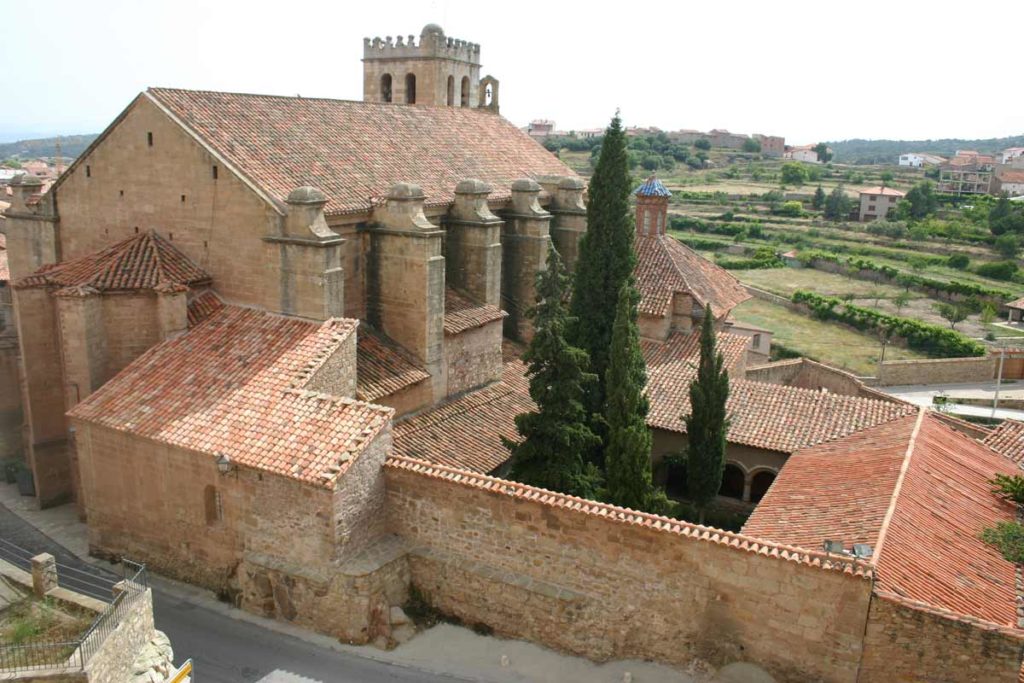
We propose you take a journey through the most impressive castles of Aragon. Although, obviously, between the more than five hundred that still standing down we pick of the ones which never fail to leave us breathless for being the most outstanding. In an itinerary through the three Aragonese provinces, what always prevails are the shadows outlining these constructions that are permanently ingrained in the memory of the traveller. These are all the ones we shall see, but they are not all the ones there are. It is only a reference to complement a route that, while focusing much of the attention on these, should consider the rest of those who are dealt with in Aragon.
Castles with towers and enclosures, walled palaces, fortified castles, towers of Manor, fortresses for artillery and strong riflemen, are some of the typologies that are included in these defensive military constructions. All are shrouded in mystery. The castle is a cell integrated into a land that comes about not by chance, but by causality. They did not arise spontaneously and capriciously, but in a logical way, in those times when the defence of the territory was almost a local problem.
The Christian reconquest, in the 9th-10th centuries, was the time when the history of Aragonese castles began until, from the 16th century, it started to decline with the union of the Kingdoms of Spain. For this reason, there are examples from the earliest epochs (9th and 10th), in the case of those of Calatayud, Albarracín or Daroca, until after the 15th century such as Mequinenza, Mora de Rubielos or Varderrobres.
With all this historical and cultural baggage, “castle-ing around Aragon” means a tour takes you into the magical world of historic castles to explore more about conquests and disputes, visiting these stunning heritage sites.
Castles in Huesca
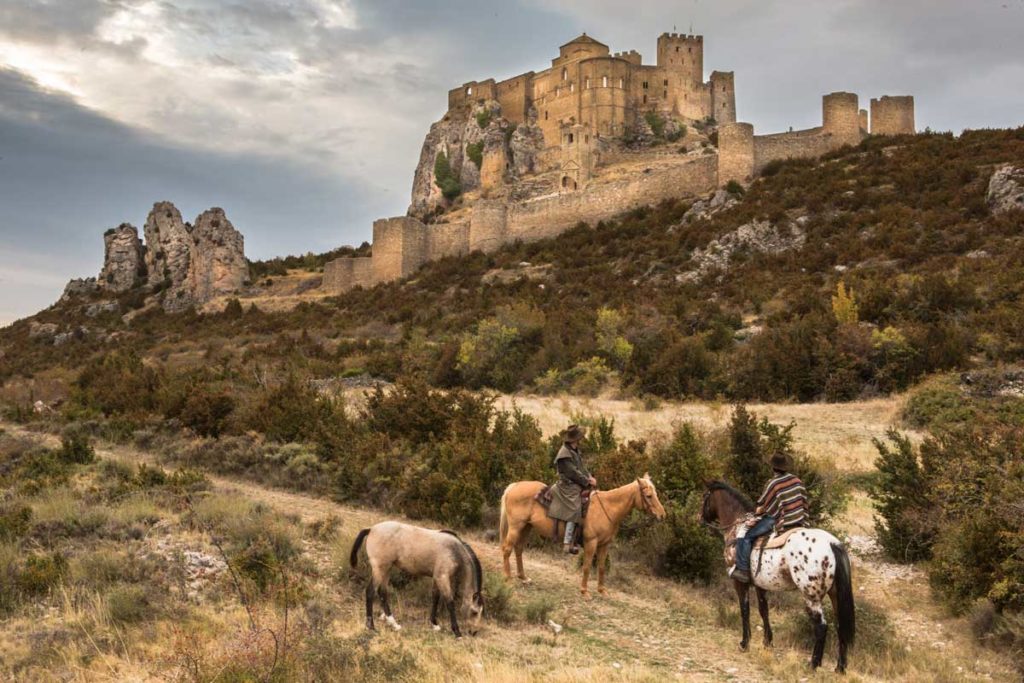
Taking as a starting point the city of Huesca, the route to follow must maintain the course that is marked by the four most representative castles of the province. Starting with Loarre and ending in Monzón, the province of Huesca provides a good example of its historical past.
Of all of them, Loarre is the most outstanding. Built in Romanesque style, it comprises a castle-convent and a walled enclosure that dates from the 11th-12th centuries. It is without a doubt an imposing place, perched on a watchtower, with an irregular layout that is surrounded by a double wall with cylindrical towers and two doors. Its presence and transcendence make it the castle par excellence of Aragon.
The legend of Romero de Loarre:
Legend has it that San Demetrio travelled through the Sierra de Loarre accompanied by a blind mule. Passing through Loarre, the mule stumbled into a rosemary bush, both falling to the ground, with such misfortune that both were mortally wounded. But, San Demetrio, before he died, said that no more rosemary would grow on Mount Loarre. And so it happened. You can find rosemary within the boundaries of other villages, but not here.
About thirty kilometres from Loarre we cross Huesca en route to the region of Somontano along the road that connects the capital of Upper Aragon with Barbastro. Quickly, scarcely having crossed it, your gaze will fall upon the castle of Montearagón, built in the 11th century. From this strategic enclave, the Aragonese kings ordered the siege and conquest of Muslim Huesca.
Continuing on highway N-240, and before reaching the city of Barbastro taking the detour to Alquézar, the castle-abbey of QasarBanulalaf will be the third stopping place of the four on this journey through the castles of Huesca. At one end of this beautiful town, on a picturesque reddish crag, stands this castle-collegiate, symbol of Alquézar.
Returning to the main road we came on, we will finish this “castellated journey” in Monzón to contemplate the castle of the Templars, built on a hill and comprising five scattered buildings: the Torre Mayor, the Romanesque chapel, the buttress vaulted room and two other towers. A route, a direction and a thousand sensations to enjoy at the foot of ramparts and towers in the Huesca countryside.
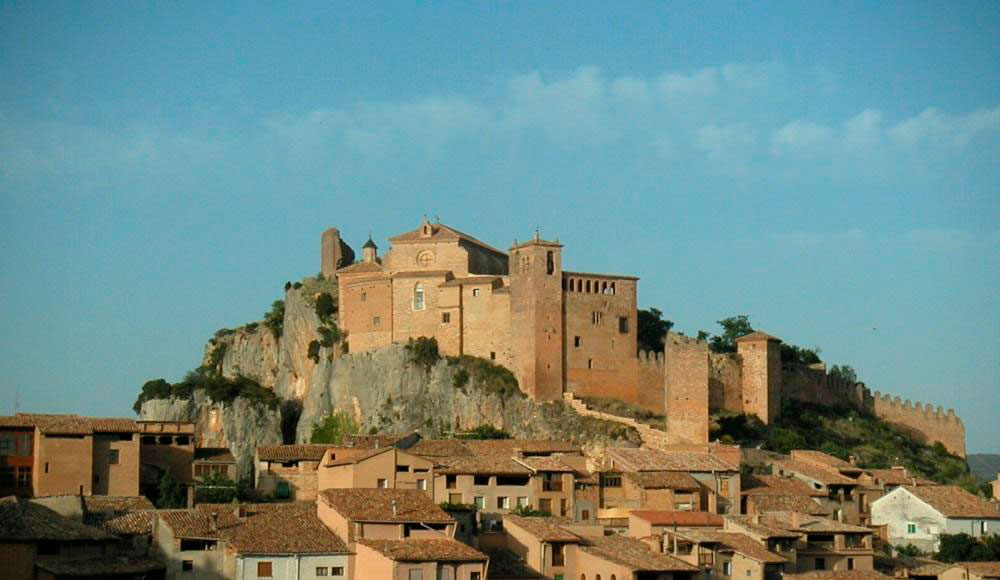
A fortress without battlements:
The Citadel of Jaca is another historical landmark in Aragon. Perfectly conserved, the “Castillo de San Pedro”, original name that later led to the present one, is a pentagonal 16th-century fortress surrounded by a moat. Together with that of Liege (Belgium), it is the only pentagonal type that is preserved intact and was declared a monument of historical and artistic interest in 1951. As the traveller approaches the Citadel, across the drawbridge, and to the Plaza de Armas, they take in the importance of this indispensable place.
Other castles: Aínsa, Albaladas de Cinca, Almudévar, Barbués, Benabarre, Boltaña, Larrés, Monflorite, Wheel of Isábena, Samitier.
Castles in Zaragoza
Of all the castle routes in this province, four are particularly outstanding. They are concentrated in the region of Cinco Villas, the region of Calatayud, the closest setting to the Moncayo and the towns surrounding the Mar de Aragon. There are many others, but these are the frontrunners.
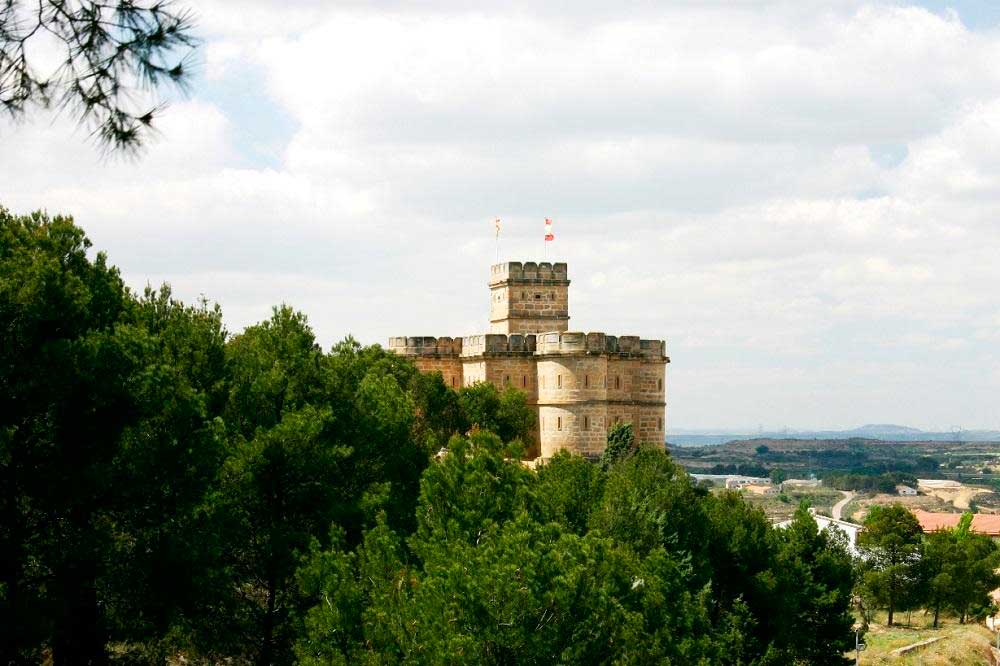
Route through Cinco Villas:
Of the lesser nobility area of Cinco Villas, four have spectacular fortifications being one of the main tourist resorts of the area that show that the Middle Ages live on in this place. The one in Sádaba, from the 12th century and standing on a rocky hill, has kept its original physiognomy intact with its rectangular enclosure and seven imposing towers that safeguard it.
Uncastillo, formerly UnumCastrum, possesses two medieval constructions, the castle of Peña Ayllón, which takes its name from the ground on which it stands, and the castle of Sibirana, which occupies almost the whole of the summit on which it sits.
Sos del Rey Católico, the place that saw the birth of King Ferdinand the Catholic, declared today a historical site, houses the 12th-century castle of Peña Felizana, small with a slender square tower and a Romanesque church at its feet.
Finally, Ejea de los Caballeros with the fortified church of the Saviour gazed upon by many who, stunned, contemplate the passage of time in this part of the Aragonese border territory.
In the middle of the city: La Aljafería:
The Aljafería is, without a doubt, the main Muslim monument in Aragon. It belongs to the castle-palace typology and consists of a complex set of buildings erected over the course of history. In these times it was moulded from the Muslim palace to the Alcazar of the Catholic Monarchs or the fortress and barracks. A universal referent, the Aljafería offers a complete system of guided tours for you to get the most out of its splendid corners.
Along the rivers bordering Calatayud:
Old Bilbilis has five castles, the Ayyub, Consolation, of the Clock, of Doña Martina and la Peña, in ancient times all of them were brought together in a fortified enclosure by the wall surrounding the city. Cervera de la Cañada, twenty kilometres from Calatayud, maintains intact the church of the Assumption from which you can contemplate the remains of the fortress part of this religious ensemble. Also, on the banks of the Mesa River stands the castle of Ibdes dominating the whole locality rising to the striking height of fifteen metres.
In the vicinity of Calatayud, the municipality of Illueca houses the castle-palace of the 14th-century Pope Luna, today turned into a magnificent inn, while the city of Daroca proudly boasts long walls enclosing the main castle and San Cristóbal.
At the foot of the Moncayo:
Magallón, Trasmoz and Tarazona are three referents when talking about castles in the Somontano of Moncayo. The first one retains the remains of the castle next to the parish church of San Lorenzo, on the top of the mountain that looms over the town, dating from the 14th century. A scene of struggles between the kingdoms of Navarre and Castile, the castle of Trasmoz, a source of myths and legends about witches that Gustavo Adolfo Becquer collected in his Rimas y Leyendas [Rhymes and Legends]. Tarazona, indisputable capital of the region, holds the remains of the castle-palace of La Zuda in the upper part of the village. Its remains, transformed by various alterations, one of the historical elements of this town, being declared a historical and artistic monument. A tour of the Moncayo merits a stop to take in these architectural referents.
Castles next to the Sea of Aragon:
At scarcely a hundred kilometres from Zaragoza, next to the so-called Sea of Aragon, lies the locality of Caspe with two imposing castles. On the one hand, that of El Bailío, built on the ruins of a Muslim palace, where the Compromise of Caspe was held, and that of Salamanca, built on the spur known as the Cabezo de Monteagudo.
Maella, twenty kilometres from Caspe towards Gandis, provides the traveller with two other examples: the castle of Count Aranda, a manor house built in the early sixteenth century, and the sleek Clock Tower, presiding the main square of the town.
The town of Mequinenza brings this journey, amid ramparts and towers, to an end. It does so with the castle-palace of the Moncadas. Its quadrilateral shape stands out, with its six rectangular towers and a pentagonal one. The door set back between the two towers dates from the 14th century while the outer enclosure is from the eighteenth and nineteenth centuries.
Undefeated fortresses in Teruel
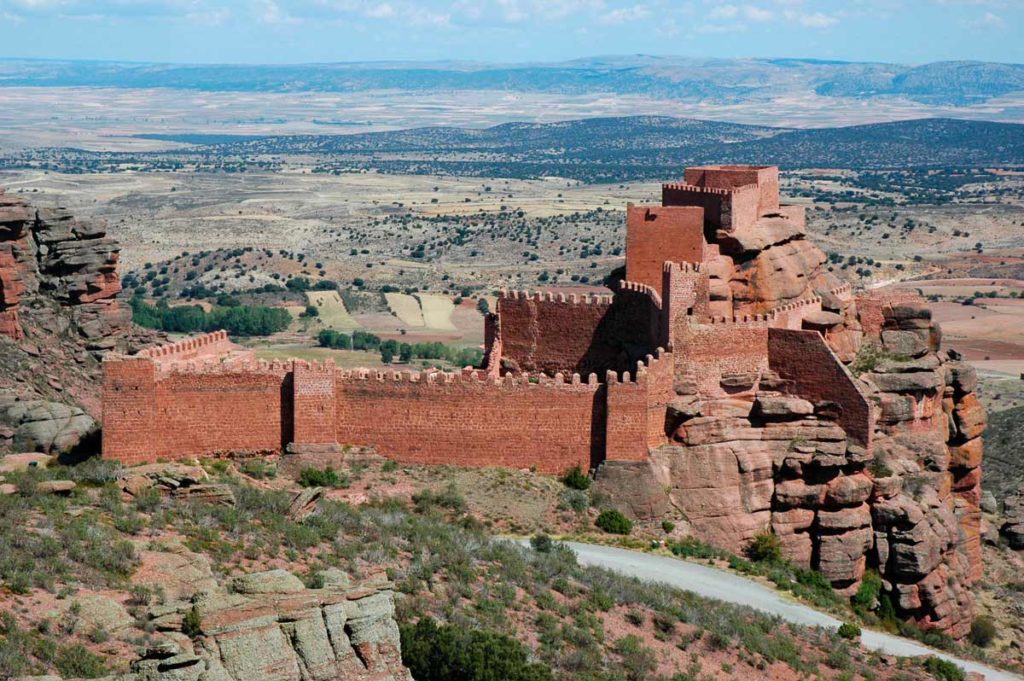
Mudejar remains the main artistic emblem of Teruel, but not the only one. There are other historical manifestations fused in colourful and multiple styles. The castles understood as legendary aesthetic referents have an important presence in this province. Here are some of them.
Teruel boasts some of the most dazzling castles in Aragon. Across its geography, from east to west and from north to south, more than one hundred and twenty fortresses are to be found, either castles, palaces, towers or walled enclosures.
One of the most frequented is that of Albarracín, bringing the exquisite urban complex together perfectly. On the very edge of the rock that surrounds most of this small town sits the wall forming an impregnable defensive belt. In 1284, Peter III stated: “they offered great difficulties; the city walls were very high, the towers, of well-hewn stone, the gates, of iron with large, strong locks, the site, very rough and inaccessible”. Today, at the foot of the castle stands the cathedral built in the 13th century and both very worthwhile.
On the border between the regions of Albarracín and Calamocha is the locality of Peracense and just a few kilometres from the castle of Piedra Solez. It occupies an area of some 4,000 square metres and is divided into three enclosures. Without a doubt, one of the most spectacular in Aragon flanked by an impregnable stone wall.
In the heart of Lower Aragon, the town of Alcañiz, the administrative centre of the region, offers the traveller three examples of castles, on the one hand, the Castillo de la Concordia [Castle of Concord], also called of the Calatravos, Torre del Campamento [Camp Tower] and Torre de Gorrizo. The first of them, today a Parador de Turismo, is undoubtedly the most important. Some of its most spectacular parts are the tower of homage, the bell tower and vestry and the part converted into an 18th century Aragonese palace.
From Alcañiz, heading towards Castellón, just thirty kilometres away, you will find the municipality of Ráfales and its central castle-palace. It was built between the 16th and 17th centuries and responds to the structure of a manor house with three interior storeys, though today it has lost its symbolic defensive traits.
In the valley of Matarraña, one of the most spectacular towns is Valderrobres, whose castle remains a mandatory referent. The whole town is noteworthy for its historical and artistic richness culminating in the castle that watches from on high over the whole locality. Built in a polygonal shape, with no elevated towers and large windows, the parade ground is particularly outstanding from where you can access other rooms. Awesome.
Finally, another architectural jewel is located in Mora de Rubielos, in the region of Gúdar-Javalambre. Flanked by four towers, the Heredia Castle presents a rectangular layout and an interior parade ground that leads to the dungeons, the noble rooms, stables, towers and other corners.
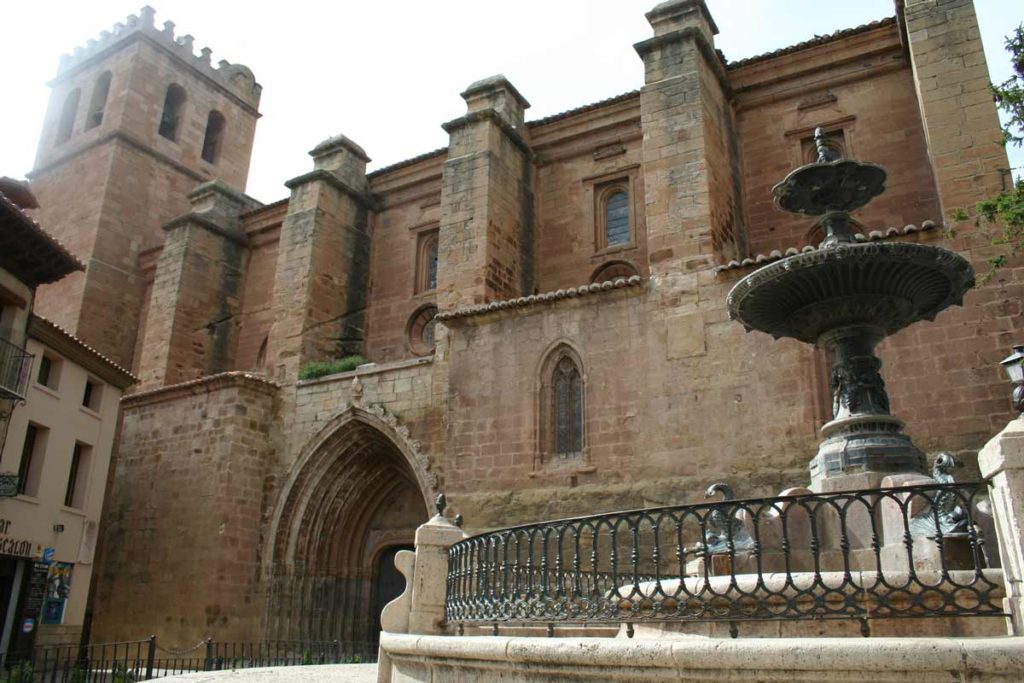
Other castles:
- Between Jiloca and Gallocanta: Bádenas, Pozuel del Campo and Ojos Negros.
- In Lower Aragon: Fabara, Albaladas del Arzobispo, Fuentespalda, Monroyo.
- In the Maestrazgo and Gúdar: Cantavieja, Alcalá de la Selva, El Castellar, Fortanete, Mirambel, Mosqueruela Puertomingalvo.
- In the coalfields: Aliaga, Ejulve, Huesa del Común, Montalbán.


